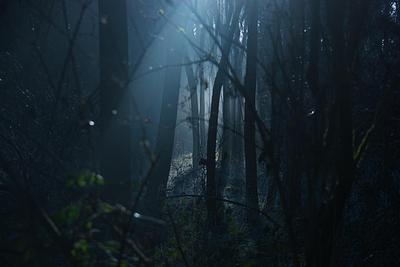Looking for all Articles by Kirsty Logan?
How to write horror stories
Author Kirsty Logan shares her top tips for writing horror stories that stay with you.

Horror stories have the power to spook us, scare us and make us think about some of life's big questions – so how do we go about writing a good one? Literary scream queen and master of atmospheric stories Kirsty Logan shares some top advice.
What are you afraid of? No – what are you really afraid of?
Horror is probably the most psychologically raw genre of writing. The best horror strips out everything except the source of the fear – and makes us sit there, experiencing it and all of its implications. The best horror is deeply personal, even confessional. It's the author digging deep and being honest about what they really fear.
I love a slasher-movie cliché as much as anyone, but if I'm honest, I'm not really scared of them. The things that really scare me are the stories centering on fears that are more strange, more raw, more individual. The best way to write a universal fear that will appeal to (meaning scare!) many people is not to go broad, but to go personal. Dig deep and write what you're really afraid of.
Learn from: A Monster Calls by Patrick Ness, Beloved by Toni Morrison, Deep Dark Fears by Fran Krause.
How much can you leave to the reader's imagination?
One mistake when writing horror is to try to describe everything. Every shriek of terror, every bit of gore, every gleam of light on a creature's fangs. But is that scary? When reading the description of someone running and screaming, do we feel afraid?
The most straightforward horror story introduces the reader to a character we identify with – and then puts that character in a situation that most people would find unnerving, unsettling or threatening. You need to ensure you've given enough information that the reader understands the next steps, but don't describe them. Allow the reader's imagination to fill in the gaps, to expand into the full horror.
Learn from: Dark Matter by Michelle Paver, Through the Woods by Emily Carroll, Bird Box by Josh Malerman, Junji Ito's stories.
What's scary, tense, affecting or emotional – but not horror?
To make your fiction unique, it's also great to take inspiration from outside the horror genre. You don't just want your horror fiction to be scary – you also want it to be emotional, engrossing, vivid, resonant, and a really good story. Find elements in other genres that you can use in your horror fiction. Read romance to learn how to write strong relationship conflict. Read fantasy and science fiction to learn how to effectively world-build. Read literary fiction to learn how to experiment with language. Read poetry to learn how to be succinct.
You can also find effective horror techniques in other genres. My horror book, Things We Say in the Dark, was heavily influenced by children's stories from the 1970s and '80s. When reading, make note of when you feel particularly affected by something, particular when you feel tense or unnerved. Try to analyse how the author is achieving this – try to figure out how the magic trick is done.
Learn from: Scottish folklore, old children's films (personally I find Who Framed Roger Rabbit, ET, Pinocchio and Return to Oz particularly unnerving), memoirs about people who have gone through traumatic or difficult events.
What's the source of the horror?
Some horror relies on fear of the other, fear of the foreign, fear of the damaged or disabled body, fear of the ageing (particularly female) body, or fear of the homosexual, transgender or queer elements in ourselves or others. Horror which, basically, relies on tired and damaging stereotypes. It's worth taking a moment to sit down and analyse the actual source of the fear in a story – and then thinking about whether that's something that we as writers really want to put out into the world.
Of course, there's the morality of this, but think also about our power of observation – which is one of the most valuable skills we have as writers. When we look at who's actually committing evil in the world, is it the above people? Or is it a person who looks like a figure of power, like a person trusted in the community – or even rather like ourselves?
Do the work, move past lazy tropes, and confront the real source of horror.
Learn from: Mexican Gothic by Silvia Moreno-Garcia, I Am Legend by Richard Matheson, Jordan Peele's films Get Out and Us.